Mobuno is a design project by xoio and IUM ( Institute of Urban Mobility). The main idea is to merge features of different kinds of transportation into one compact vehicle, made possible by autonomous driving and optional carsharing.
Mobuno can be booked like any taxi. Mobile communication devices (mobile phones, tablets, etc) allow us to communicate with the Mobuno network and the unit itself. One Mobuno vehicle designed for 4 people. If you don’t mind to share your travel with other people, the vehicle can be switched to shared mode and Mobuno will be transformed to a bus smartly reacting to requests from other users while en route.

Even better: Smart platooning will further increase effectiveness by teaming up the units in a energy efficient queue with lower air friction. This is when Mobuno takes the best of trains and busses. Obviously Mobuno does not require any special streets – it simply integrates into current road standards, to easen transition into new systems.
Autonomous driving allows to use automatic parking to make much better use of parking areas. Mobuno units can squeeze tightly together and will rearrange smoothly as soon as units are required. Since the units can communicate with each other this is easily done. Mobuno’s unique ballweel construction allows maneuvribility even in the most tight spaces. Mobuno can get to places where other vehicles do struggle.
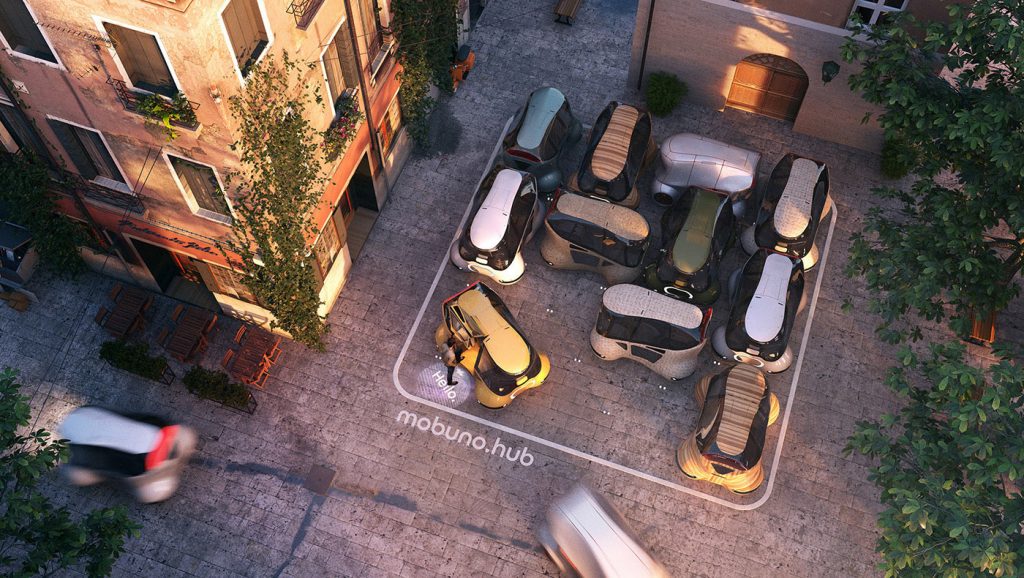
Mobuno automatically creates a network of available units to facilitate a satisfactory distribution. As soon as a unit is in service the decentral hivemind restructures the grid to guarantee a maximum availability with the least amount of units necessary. The network density is influenced by probability of demand.
Availability is important, but in times of lower demand, fewer units might be sufficient. During nighttime many Mobuno units can gather at low awareness locations to free up urban space or might return to base for maintenance. Lower amounts of units are still available depending on demand.
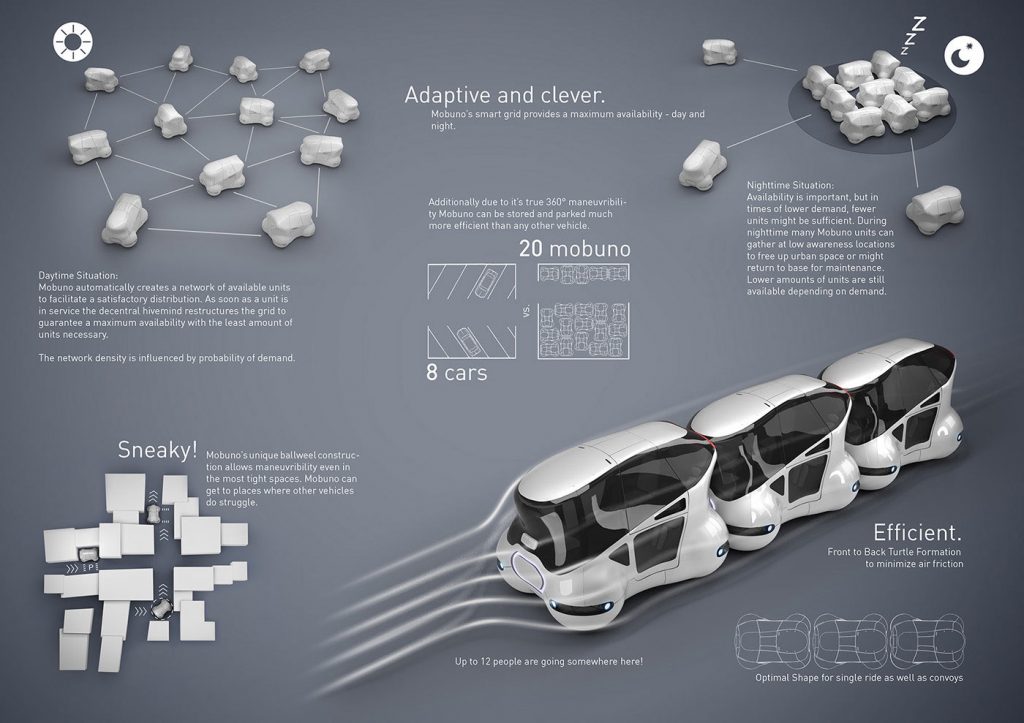
Mobuno is constructed of easily distinguishable components, which can be assemblied with ease. This allows communities to build unique versions of Mobuno. Alternative materials are conceivable, opening the possibility of new production methods or the use of recycled composites. Additionally maintanenance is democrati-ced. Even in remote areas fixing a vehicle is feasible through the optional use of available resources. Surplus product updates are easy through publicly available construction info.


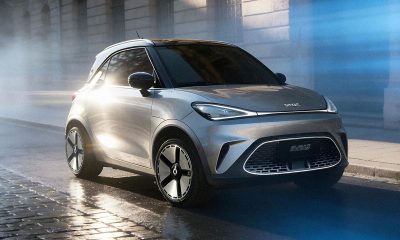

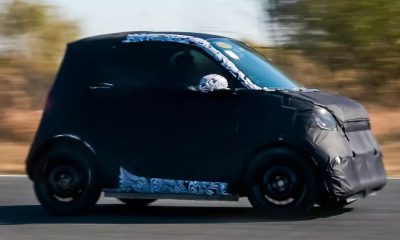



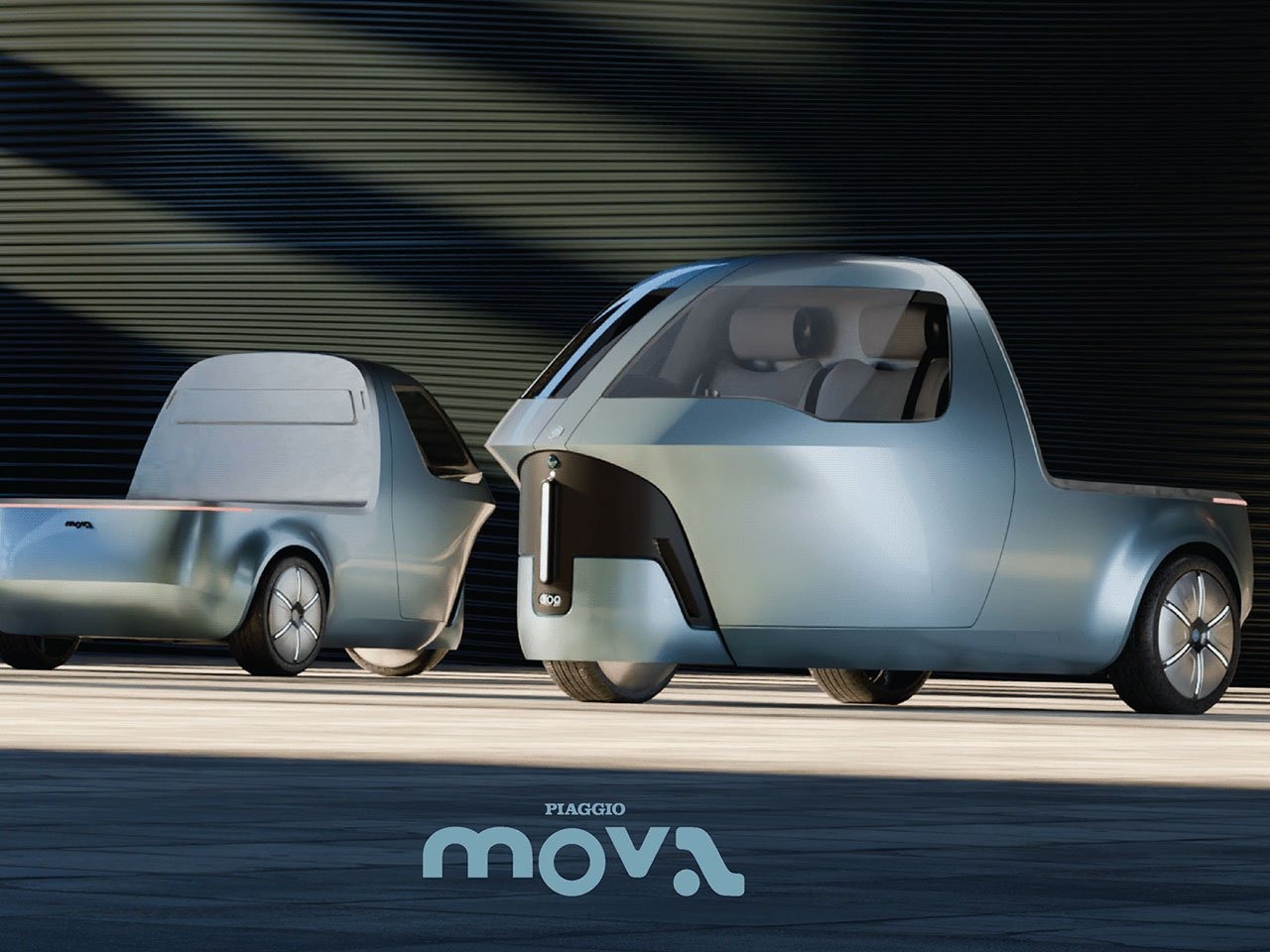

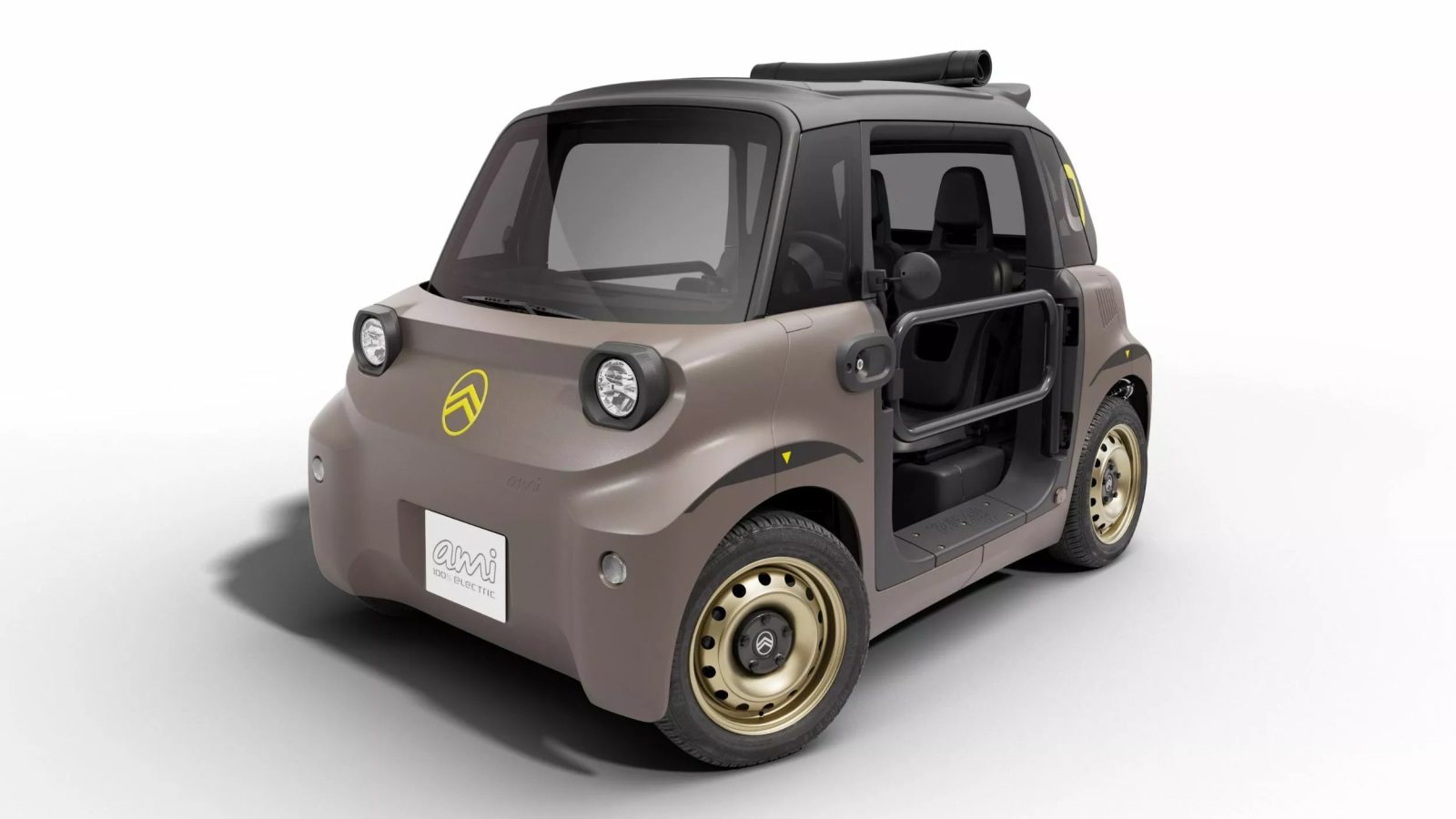





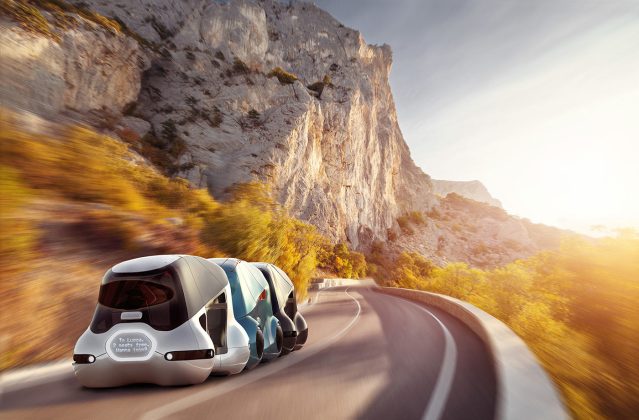
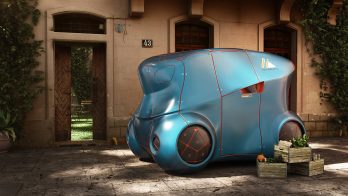
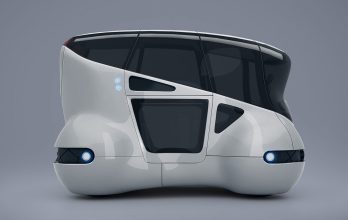
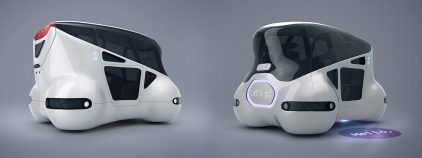
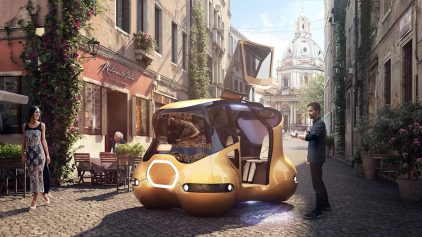
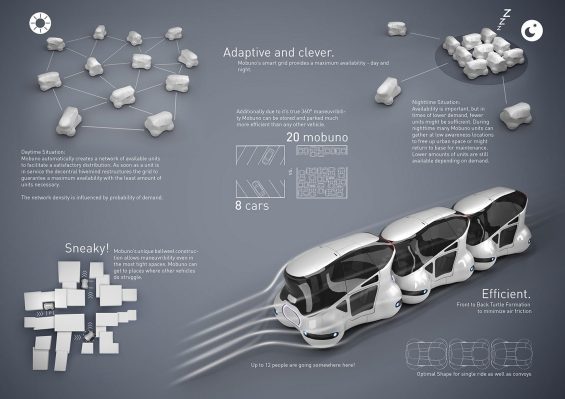

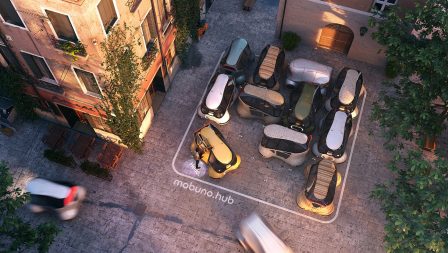
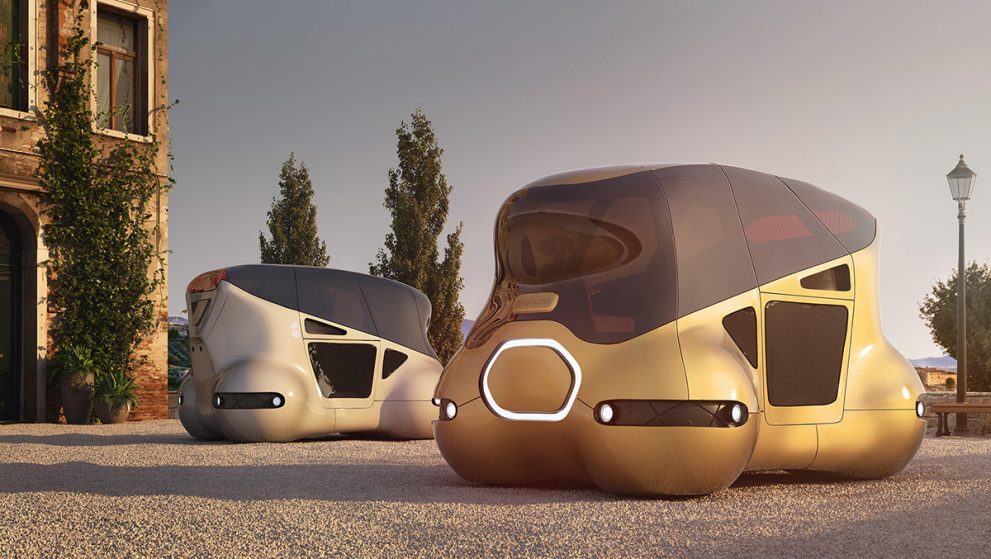

You must be logged in to post a comment Login